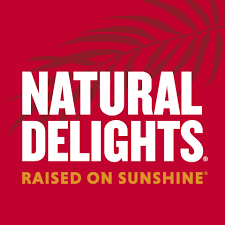Mezcal has only been part of the cocktail conversation in the U.S. for the past few decades, but today the Mexican agave spirit is a darling of the mixology world. Favored for its diversity of character—some bottlings bear strong ashy profiles while others have verdant jalapeño and bell pepper notes, for example—mezcal works as both subtle accent and bold base spirit. It often gets casually subbed in for gin, tequila or rum to bring complexity and depth to well-known favorites like the Margarita and Negroni, and it shines in modern classics like Phil Ward’s Oaxaca Old-Fashioned and Joaquín Simó’s Naked & Famous.
Yet because the agave spirits realm is plagued by issues of sustainability, economic injustice and cultural preservation, choosing what mezcal to mix with is not as simple as looking at price point and flavor profile alone. In fact, agave scholars and enthusiasts have long debated whether it’s responsible to use mezcal to make cocktails at all: Some believe that the practice puts undue strain on the environment and encourages a homogenization of flavor profile, which threatens not only the sustainability of agave plants but also the cultural heritage of a spirit that has been a staple in Mexican communities for hundreds of years.
Many bartenders, both stateside and in Mexico, feel that so long as they take the time to educate themselves and their guests about the spirit, mezcal cocktails are a great gateway into the category. “I think as long as you’re doing it with intent, respect and some background knowledge, you’re doing just fine,” says Amanda Swanson, president of the Philadelphia U.S. Bartenders’ Guild and bartender at Parc. “Mezcal cocktails, when done correctly, are not only delicious, but they can be downright artistic. Just know your product, where it comes from and how it’s made.”
To get the best intel on what factors to consider and what brands to use, we surveyed a dozen bartenders, some working in large agave-centric markets like New York, Chicago and Dallas, and others from smaller cities, including New Orleans, Minneapolis and Philadelphia. We asked each participant for their top three bottle recommendations as well as an argument for each. Almost every bartender suggested taking price, agave variety and production ethics into consideration.
Pricewise, the consensus range landed between $30 and $50 for good-quality mixing mezcal. “If it’s too cheap, that’s an indication that the quality is bad, the process is unsustainable, or someone in the supply chain is getting screwed over,” says Emilio Salehi, beverage director at Cavaña in San Francisco. “Inversely, if it’s a very expensive mezcal, that could be an indication that the process is extremely artisanal and/or the agave is very rare,” Salehi adds. “In this case, mezcal should only be served neat, as putting it in a cocktail would just mask the layers of complexity.”
As a counterpoint, Cristhian Rodriguez, beverage director of elNico in Brooklyn, suggests reserving those special bottles to use as an accent in a mixed drink. “Usually, something with a higher price point can be used in smaller proportions to complement or add in any cocktail, either because it has a higher proof and/or bolder and distinct character,” he says.
Almost every bartender called out espadín (Agave angustifolia) as a solid option because it is the most widely available, consistent and affordable. But many bartenders were also quick to add that it is wise to not mix with only espadín, in order to prevent putting undue strain on the single variety, which can lead to dangerous monocultures. “Angustifolia is the dominant species that mezcal is produced from for three reasons: high brix content, ease of propagation and relatively short maturation period. This all helps keep cost down (even though it’s been at a historic high), but it also runs the danger of creating a monoculture like we see with tequilana [the agave variety used to make tequila], where generations of clonal reproduction have created a crop that is genetically homogeneous and susceptible to disease and pestilence,” explains Shad Kvetko, owner of Las Almas Rotas in Dallas. “So there’s an argument to be made for using other species in cocktails to help prevent this.”
When reaching for non-espadín varieties, keep in mind that many wild-harvested agaves are not necessarily a sustainable option. “Our rules are nothing super old, nothing super rare and nothing wild,” says Haley Saucier, owner and beverage director at Espíritu Mezcalería in New Orleans. “I’d never mix an arronqueño or tepeztate in a cocktail, just like someone wouldn’t typically mix a 25-plus-year-old Scotch.” Today, many mezcaleros are cultivating varieties previously thought to only grow wild, like tobalá, sierra negra, coyote and barril; these would serve as great options in lieu of their wild counterparts.
Finally, the majority of surveyed bartenders emphasized the importance of factoring a brand’s ethics and production practices into the decision. “There’s certainly been a gold rush in the agave space in recent years,” says Salehi. “Whether it’s tequila or mezcal, do some research on who is benefiting from your purchase. Is it a family that has been producing mezcal for generations, or is it a celebrity that is just trying to make a quick buck?”
Swanson agrees, adding, “Mezcal is one of the most labor-intensive exports out there, and is culturally and historically the most significant product coming out of Mexico. It should be consumed with the appropriate respect for what goes into it,” she says, summarizing: “Buy small, buy private, do your homework.”
Below are the most recommended brands by bartenders, listed in order of popularity. (And for more best practices for sourcing agave spirits responsibly, read our complete guide to buying and drinking mezcal.)
The Best Mezcals for Mixing
Banhez Joven

By far the most recommended brand of the bunch, Banhez Joven is what’s known as an ensamble—a mixture of agave varieties, in this case 90 percent espadín and 10 percent barril agaves—made by the Unión Productores de Agropecuarios del Distrito de Ejutla de Crespo (UPADEC), a co-op of farmers and producers located in Ejutla, Oaxaca. “I love that Banhez is produced by a co-op of mezcaleros, so you know that every dollar spent on this mezcal directly benefits the community and hands that produce it,” says Salehi.
To make the spirit, plants are typically semicultivated, cooked in earthen pits over wood fire, crushed via tahona, fermented in open-air wooden tanks with wild yeasts, and then distilled using wood-fired copper alembic stills that are unique to the area because they feature a refrescador, which allows for multiple distillations to happen in a single pass through the still. This process “tends to produce a bold mezcal that will not be obscured by other ingredients” in a cocktail, says Kvetko.
“It has an excellent balance of sweet tropical fruit, minerality and even some floral characteristics,” adds Salehi, echoing Kvetko’s sentiment: “It definitely adds some weight to cocktails but doesn’t overpower any of the other components.”
Del Maguey Vida Clásico

When Del Maguey launched Vida as a “cocktail mezcal” in 2010, it quickly became the most widely used mezcal for mixing, thanks to its low-ish proof and widespread availability. More than a decade later, the expression is still favored by bartenders everywhere. “The actual premise is that they took one of their higher espadín marks (from San Luis del Río, Oaxaca) and cut back in some of the heads and tails before bringing it down to proof,” says Swanson. “This results in a more cost-effective bottle, and a juice that can stand up to the flavors of almost any mezcal cocktail combination.”
Del Maguey has since released two more mezcals in the Vida line—one from the state of Puebla, and another called Vida de Muertos, a special 45 percent ABV edition from San Luis del Río—which both bring subtle nuances to cocktails as well. Elaine Romero, bartender at Atla Noho and The Raines Law Room in New York City, calls out Del Maguey’s Chichicapa (48 percent ABV) as a good option for drinks that would benefit from a little more oomph. The espadín-based expression from San Baltazar Chichicapam, Oaxaca, has a special funky tropical fruit profile that “works really well in a prime cocktail like the Naked & Famous or mezcal Last Word. This is a classic for a classic,” they say.
- Price: $33 (750 milliliters)
- ABV: 42%
Derrumbes San Luis Potosí

The most popular non-espadín mezcal called out in the survey, this expression of Derrumbes is made from wild salmiana crassispina, the predominant agave that grows in the state of San Luis Potosí. The plants take between 10 and 13 years to come to maturity, and mezcalero Manuel Pérez cooks them in above-ground stone ovens, using dried agave leaves and quiotes (stalks) as kindling to keep the wood burning, which brings a unique flavor to the spirit. At the distillery in Charcas, the cooked agave is crushed via tahona, fermented in rock tanks with ambient yeast, and then distilled twice in a copper pot still.
At La Josie in Chicago, bar manager Juan Carlos Parker says this mezcal is “a nice way to switch things up while still being cost-effective; mezcales from San Luis Potosí are much less smoky than Oaxacan espadín, and salmiana tends to have very green notes, with a slightly cheesy flavor profile.”
As Parker suggests, the spirit is lauded for its vibrant aromas and fresh complexity. At Travail Kitchen and Amusements in Minneapolis, Roger Landes adds that while the wild salmiana flavor profile doesn’t work in every cocktail application due to its high minerality, “when this works, it SINGS.” Javier Arroyo, beverage manager of Chicago’s Copal, agrees, adding that this mezcal is “perfecto for cocktails that originally are made with gin, because it is very green and fresh, with notes of green bell pepper and eucalyptus. Not smoky. Perfect for a Negroni, Last Word or a spicy Margarita.”
- Price: $45 (750 milliliters)
- ABV: 43% (varies by batch)
Tosba Espadín

Made in San Cristóbal Lachirioag in the northern mountains of Oaxaca, Tosba “is bright, complex,” and “one of the few brands that can keep the consistency of their recipe over the years,” says Romero.
Produced by cousins Edgar and Elisandro Gonzalez, who grow many of their agaves from seed, the spirit is made with espadín that’s been cooked in an earthen underground oven covered with banana leaves. The cooked piñas are crushed by tahona, fermented in open-air wooden vats with wild yeast and distilled twice in copper alembic stills heated by wood fire. Ignacio “Nacho” Jimenez, of Superbueno in New York City, calls it a true reflection of the espadín style. “It’s light-bodied, more acidic, and has tropical notes as well,” he says, adding that it works particularly well in Margaritas. “It could even work in a Negroni because of those tropical notes, and the proof of the mezcal will stand up to Campari and vermouth.”
Tosba is also a favorite among bartenders for its backstory: The cousins, who once migrated to Northern California due to lack of economic opportunity in Oaxaca, returned home to start the brand in hopes of bringing more jobs to their hometown. They now make several expressions of mezcal, including tobalá, tepeztate and warash—a unique agave native to the region—plus a rum made from fresh-pressed sugar cane.
- Price: $55 (750 milliliters)
- ABV: 48.5% (varies by batch)
El Buho Espadín

“If you want something with a little more of a smoke backbone, without the aftertaste of a fire-breathing dragon, I recommend El Buho,” says Swanson. Made in Santiago Matatlán in Oaxaca by the Jimenez Mendez family, the agave piñas are cooked in earthen ovens for seven days, tahona-crushed, fermented for 10 days in pine vats with wild yeast and distilled twice in copper pot stills.
“The espadín expression kick-started a beautiful relationship between the brand owners, based out of New York, and the family that produces, in Oaxaca. As it increased in popularity, the family was able to expand, building additional palenques on the properties of the brother and sister of the original mezcalero. The entire family now produces mezcal, and have introduced several other silvestre [wild-variety] expressions to their product line, while simultaneously dramatically increasing the quality of life for themselves and their children,” Swanson adds. “It’s a solid brand that maintains its boutique undertones even as it expands its production.”
Saucier also cites the family’s production practices as a top reason for recommending the brand. “We have a long-standing relationship with the family who make it; we’ve watched the newest generation of kids grow up. We see the work they do in Santiago Matatlán, we know how they are paid, and we know their working conditions,” she says. “There’s nothing like personally knowing the people behind your spirit and having seen that they’re doing everything right with your own eyes.” The brand also makes sense from a practical standpoint, Saucier adds. “The price is right, the mezcal is balanced and consistent enough between batches that we can use it for menu mainstays, and it works very well to get the guest who’s afraid of mezcal on board.”
- Price: $50 (1 liter)
- ABV: 45%
Credit: Source link





![[Guide] 5 Reasons Your Business Does or Doesn’t need an ESOP [Guide] 5 Reasons Your Business Does or Doesn’t need an ESOP](https://foodindustryexecutive.com/wp-content/uploads/2024/08/Food-Industry-Executive-696x457.png)








